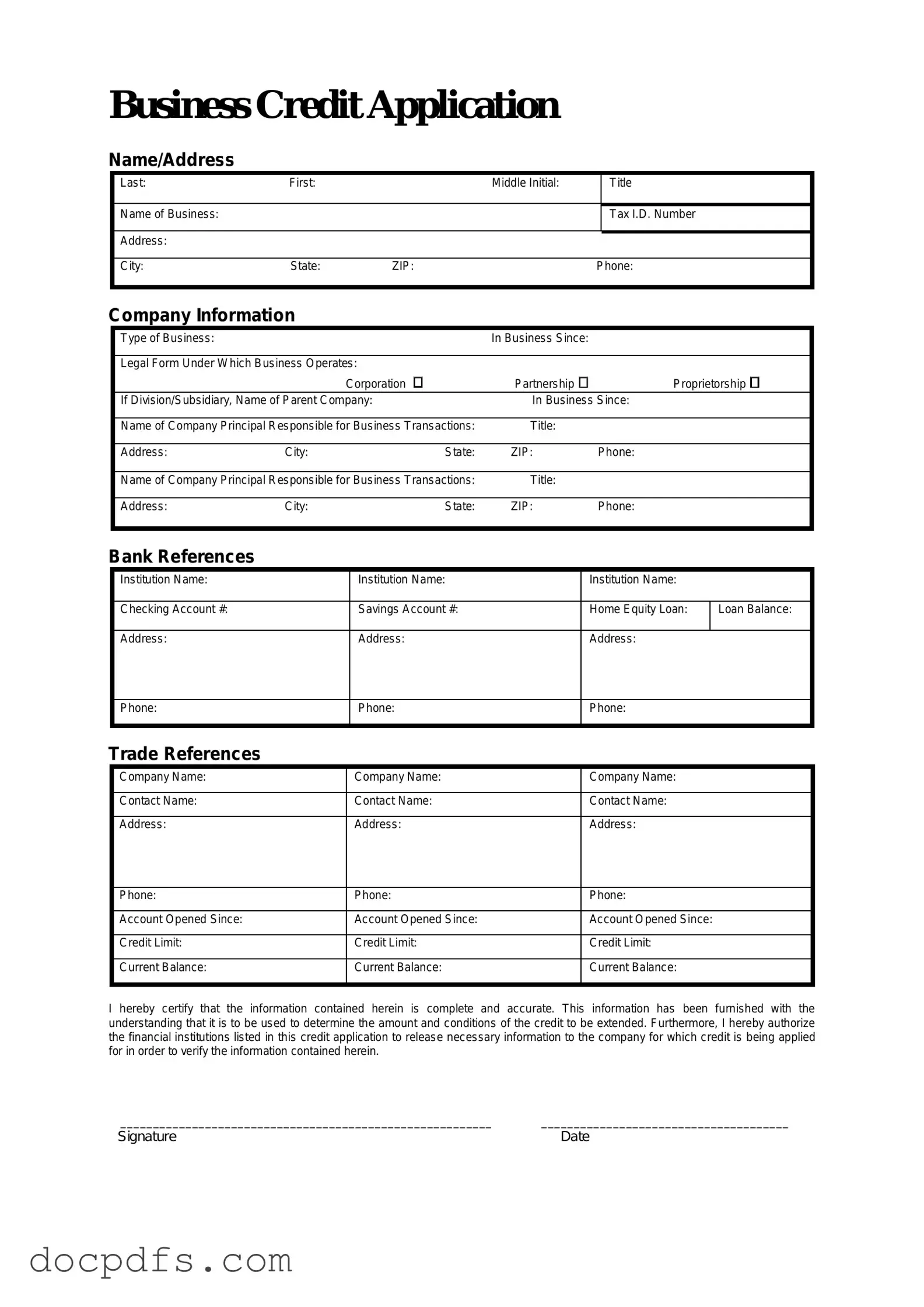The Business Credit Application form is a document that allows businesses to apply for credit from a lender or supplier. It collects important information about the business, including its financial history, ownership structure, and creditworthiness. This helps lenders assess the risk of extending credit to the business.
Any business seeking credit should complete this form. This includes small businesses, startups, and established companies looking to expand their credit lines. Both sole proprietorships and corporations can apply, provided they meet the lender's requirements.
The form usually asks for the following information:
-
Business name and address
-
Type of business entity (e.g., LLC, corporation)
-
Tax identification number
-
Owner(s) information
-
Financial statements or bank references
-
Trade references
-
Desired credit limit
How long does it take to process the application?
The processing time can vary depending on the lender. Generally, it may take anywhere from a few days to a couple of weeks. Factors that influence this timeline include the completeness of the application and the lender's current workload.
What happens if my application is denied?
If your application is denied, you will typically receive a notice explaining the reasons for the denial. Common reasons include insufficient credit history, low credit scores, or incomplete information on the application. You can often address these issues and reapply in the future.
Can I apply for credit if my business is new?
Yes, new businesses can apply for credit. However, they may face additional scrutiny since they do not have an established credit history. Providing personal guarantees or collateral can improve the chances of approval.
Is there a fee associated with submitting the application?
Most lenders do not charge a fee for submitting a Business Credit Application form. However, some may have associated costs, such as credit report fees or application processing fees. Always check with the lender for any potential charges.
If you need assistance, consider reaching out to a financial advisor or the lender’s customer service. They can provide guidance on what information is needed and how to present it accurately. Additionally, many lenders offer resources or FAQs on their websites to help applicants.
